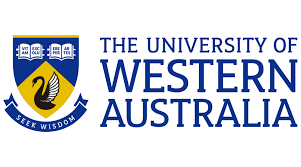University of Western Australia: New defence paper urges rethink of US-Australia alliance
A new strategy paper by The University of Western Australia’s Defence and Security Institute is calling for a change in focus for the ANZUS Alliance as Australia moves into a new era in the Indo-Pacific region.
The UWA Defence and Security Institute (DSI) today launched a Black Swan Strategy Paper: ANZUS Pivot Points: Reappraising ‘The Alliance’ For a New Strategic Age.
The paper was written by UWA’s Chair of Defence Studies Peter Dean, Director of UWA DSI, which last year received a $1.3 million Defence Strategic Policy Grant.
Professor Dean said as Australia moved into a very different geostrategic era, the focus of the US-Australia Alliance had to change.
“2021 marked the most significant moment in Australia’s alliance-based strategic culture since the signing of ANZUS in 1951,” he said.
“Last year we saw fundamental changes to the nature and character of Australia’s alliance with the United States.
“The relative decline of the United States, Australia’s increasing importance to US strategy in the Indo-Pacific, the emergence of a multi-polar region and new challenges to the rules base order have seen both countries shift policy.”
Professor Dean said that amid all the discussions of nuclear-powered submarines, what was largely missed was a series of far more significant changes to Australia’s strategic position and the direction of the Alliance with the United States.
Chair of the UWA DSI Board and former Defence Minister Professor Stephen Smith said the paper was the first to describe the Integrated Defence and Deterrence era (including AUKUS) and nuclear-powered submarines as an “Alliance Revolution”.
“Like so much of what Professor Dean writes, this Black Swan Strategy Paper on the history of the Alliance, is fully informed, incisive, and both informative and challenging for modern day practitioners,” Professor Smith said.
To address the new challenges the Black Swan Strategy Paper calls for:
Much more open and frank discussion of the future of the Alliance based on mutual interests and balancing its benefits: including a more detailed discussion of its potential risks and costs.
An integrated force structure and force posture review to realign Australia’s defence force ADF to meet the challenges of major power competition and the new US policy of Integrated Deterrence.
A review of Alliance institutions, the expansion of joint military planning and the investigation of new headquarter for combined US and Australian operations in the Indian Ocean.
A new language to describe the alliance reflecting an era of heightened Australian requirements and greater strategic risk in the US-Australia Alliance.
A holistic national security strategy that integrates foreign, defence, industry, climate, energy and geo-economic policies to meet the challenges of a now multi-polar Indo-Pacific, and the increased security threats generated by major power competition and climate change.

